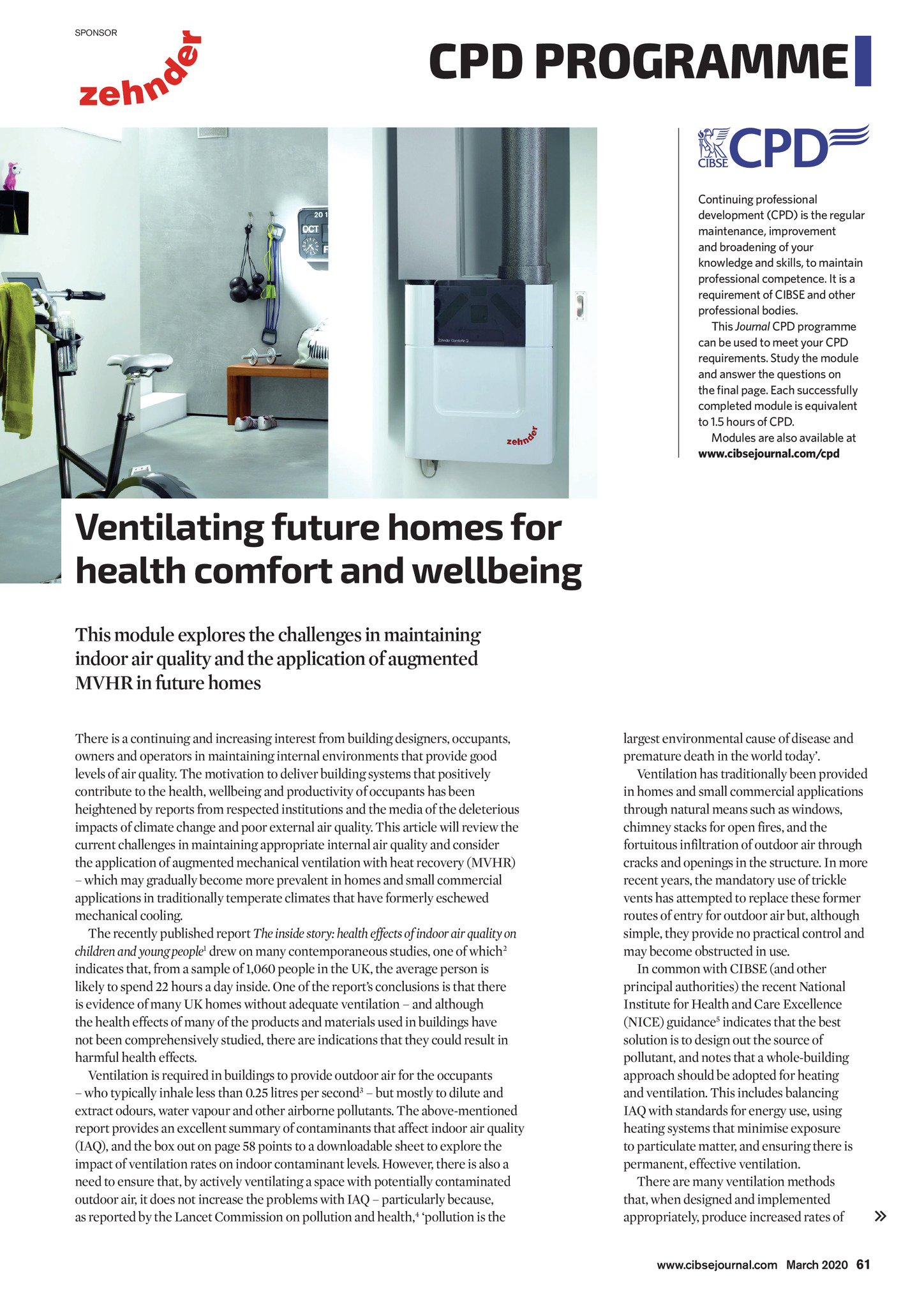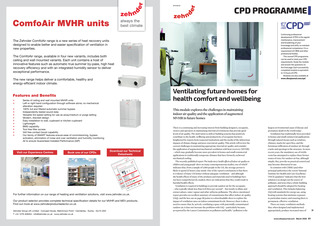


SPONSOR CPD PROGRAMME Continuing professional development (CPD) is the regular maintenance, improvement and broadening of your knowledge and skills, to maintain professional competence. It is a requirement of CIBSE and other professional bodies. This Journal CPD programme can be used to meet your CPD requirements. Study the module and answer the questions on the final page. Each successfully completed module is equivalent to 1.5 hours of CPD. Modules are also available at www.cibsejournal.com/cpd Ventilating future homes for health comfort and wellbeing This module explores the challenges in maintaining indoor air quality and the application of augmented MVHR in future homes There is a continuing and increasing interest from building designers, occupants, owners and operators in maintaining internal environments that provide good levels of air quality. The motivation to deliver building systems that positively contribute to the health, wellbeing and productivity of occupants has been heightened by reports from respected institutions and the media of the deleterious impacts of climate change and poor external air quality. This article will review the current challenges in maintaining appropriate internal air quality and consider the application of augmented mechanical ventilation with heat recovery (MVHR) which may gradually become more prevalent in homes and small commercial applications in traditionally temperate climates that have formerly eschewed mechanical cooling. The recently published report The inside story: health effects of indoor air quality on children and young people1 drew on many contemporaneous studies, one of which2 indicates that, from a sample of 1,060 people in the UK, the average person is likely to spend 22 hours a day inside. One of the reports conclusions is that there is evidence of many UK homes without adequate ventilation and although the health effects of many of the products and materials used in buildings have not been comprehensively studied, there are indications that they could result in harmful health effects. Ventilation is required in buildings to provide outdoor air for the occupants who typically inhale less than 0.25 litres per second3 but mostly to dilute and extract odours, water vapour and other airborne pollutants. The above-mentioned report provides an excellent summary of contaminants that affect indoor air quality (IAQ), and the box out on page 58 points to a downloadable sheet to explore the impact of ventilation rates on indoor contaminant levels. However, there is also a need to ensure that, by actively ventilating a space with potentially contaminated outdoor air, it does not increase the problems with IAQ particularly because, as reported by the Lancet Commission on pollution and health,4 pollution is the largest environmental cause of disease and premature death in the world today. Ventilation has traditionally been provided in homes and small commercial applications through natural means such as windows, chimney stacks for open fires, and the fortuitous infiltration of outdoor air through cracks and openings in the structure. In more recent years, the mandatory use of trickle vents has attempted to replace these former routes of entry for outdoor air but, although simple, they provide no practical control and may become obstructed in use. In common with CIBSE (and other principal authorities) the recent National Institute for Health and Care Excellence (NICE) guidance5 indicates that the best solution is to design out the source of pollutant, and notes that a whole-building approach should be adopted for heating and ventilation. This includes balancing IAQ with standards for energy use, using heating systems that minimise exposure to particulate matter, and ensuring there is permanent, effective ventilation. There are many ventilation methods that, when designed and implemented appropriately, produce increased rates of www.cibsejournal.com March 2020 61 CIBSE Mar20 pp61-64 CPD v3.indd 61 21/02/2020 15:08